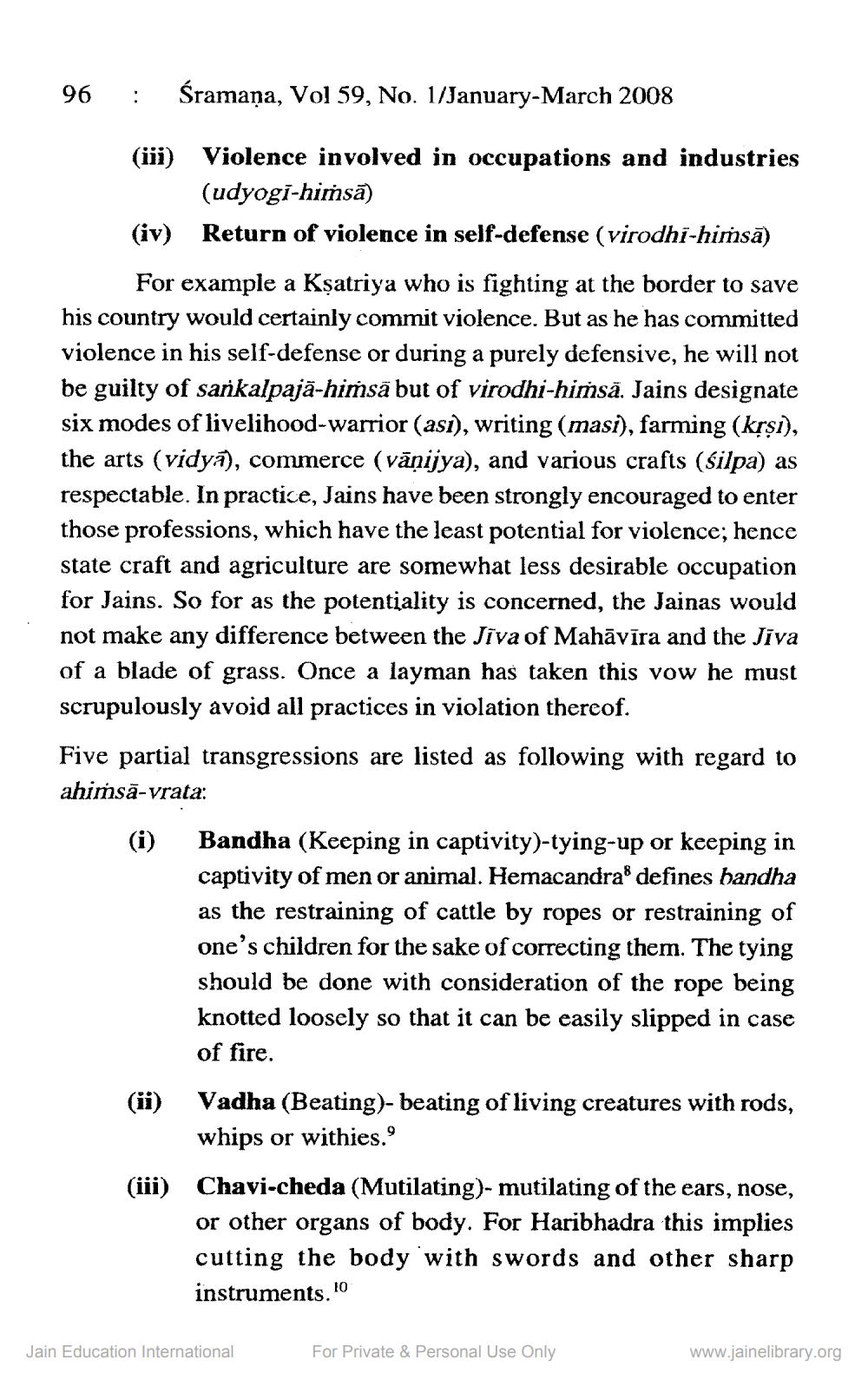________________
96
Śramana, Vol 59, No. 1/January-March 2008
(iii) Violence involved in occupations and industries (udyogi-himsā)
(iv) Return of violence in self-defense (virodhi-himsā)
:
For example a Kṣatriya who is fighting at the border to save his country would certainly commit violence. But as he has committed violence in his self-defense or during a purely defensive, he will not be guilty of sankalpajā-hiṁsä but of virodhi-himsā. Jains designate six modes of livelihood-warrior (asi), writing (masi), farming (krşı), the arts (vidya), commerce (vāṇijya), and various crafts (śilpa) as respectable. In practice, Jains have been strongly encouraged to enter those professions, which have the least potential for violence; hence state craft and agriculture are somewhat less desirable occupation for Jains. So for as the potentiality is concerned, the Jainas would not make any difference between the Jiva of Mahāvīra and the Jiva of a blade of grass. Once a layman has taken this vow he must scrupulously avoid all practices in violation thereof.
Five partial transgressions are listed as following with regard to ahimsa-vrata:
(i) Bandha (Keeping in captivity)-tying-up or keeping in captivity of men or animal. Hemacandra defines bandha as the restraining of cattle by ropes or restraining of one's children for the sake of correcting them. The tying should be done with consideration of the rope being knotted loosely so that it can be easily slipped in case of fire.
(ii) Vadha (Beating)- beating of living creatures with rods, whips or withies."
(iii) Chavi-cheda (Mutilating)- mutilating of the ears, nose, or other organs of body. For Haribhadra this implies cutting the body with swords and other sharp instruments.
10
Jain Education International
For Private & Personal Use Only
www.jainelibrary.org




